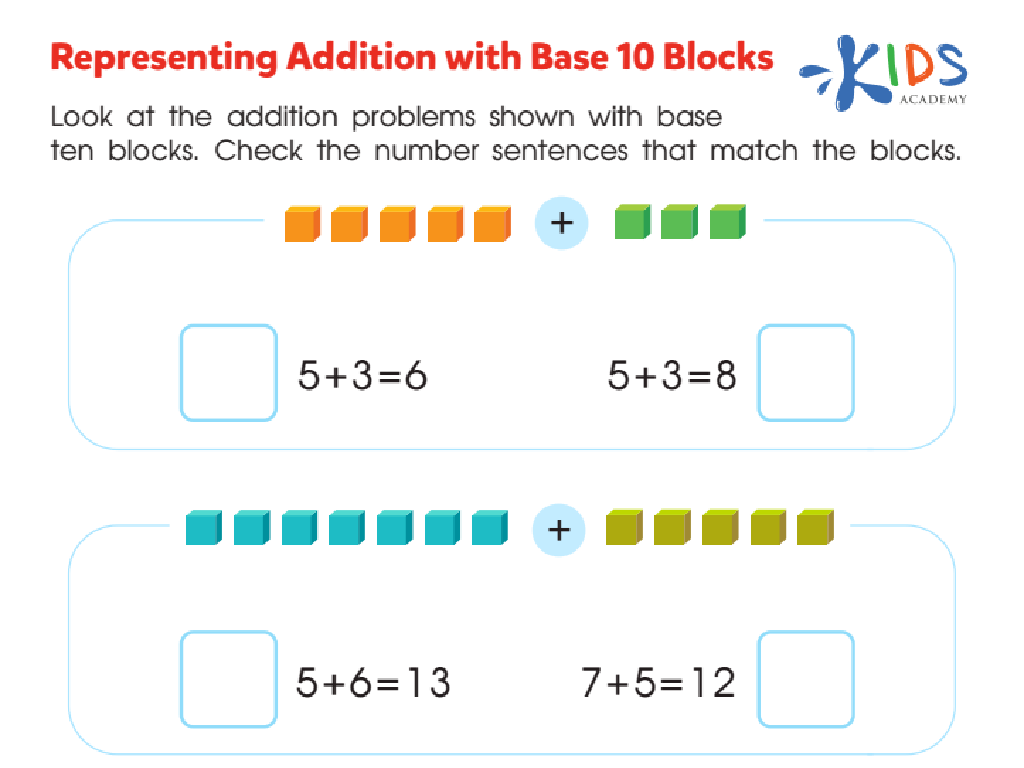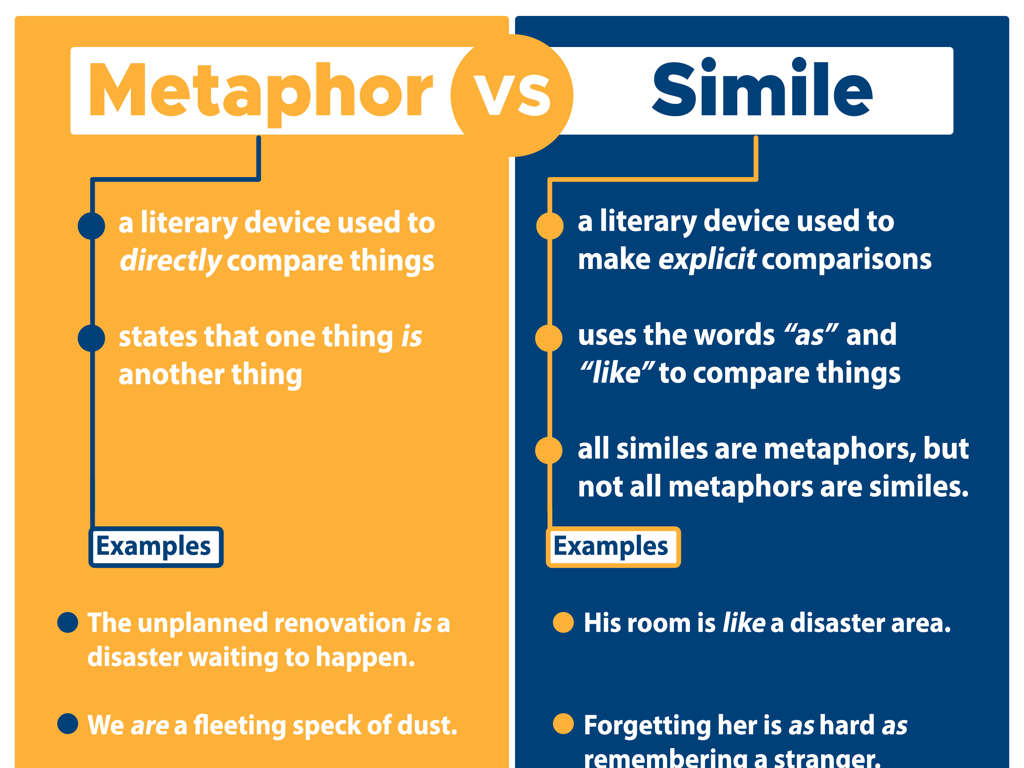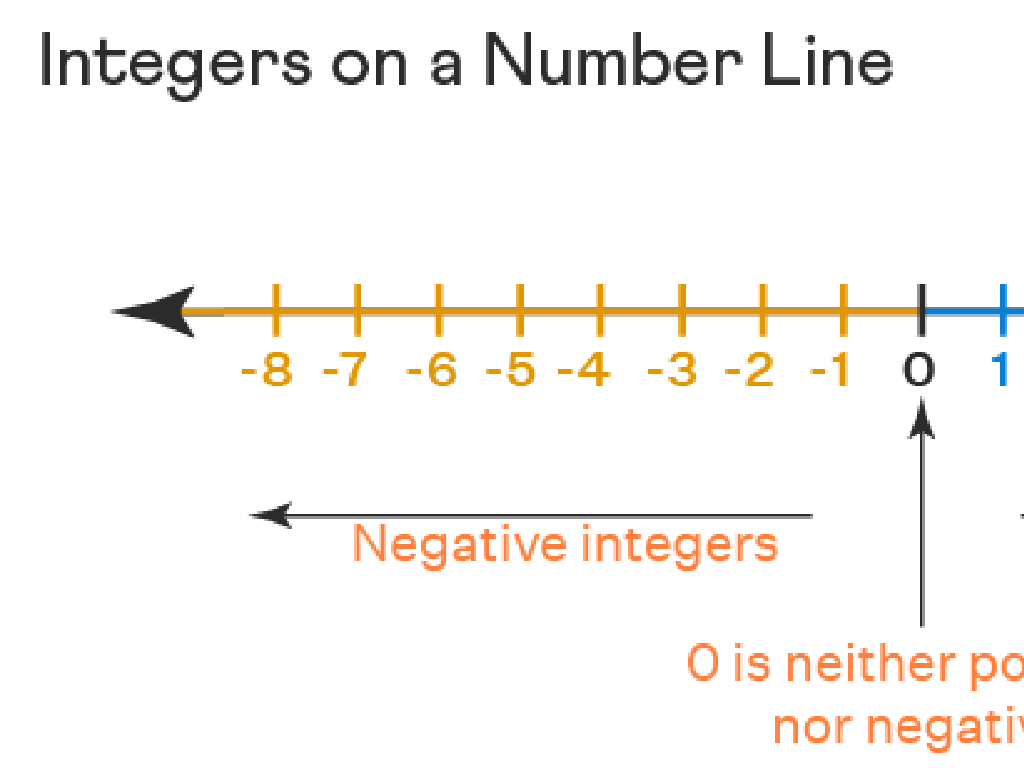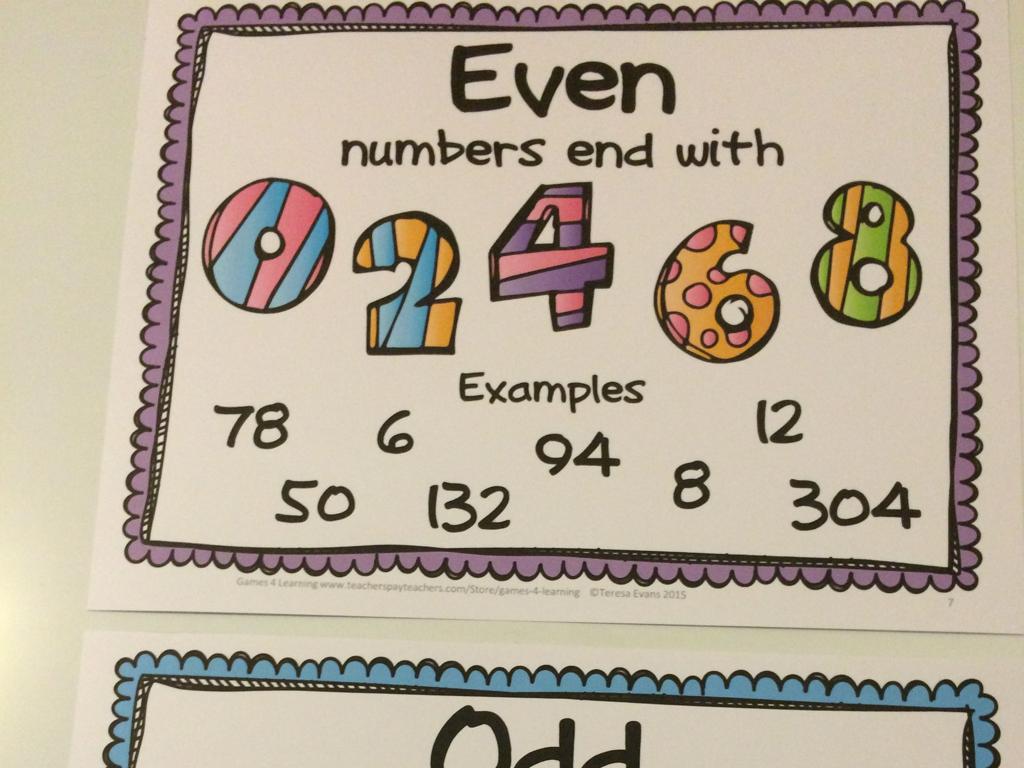Wide And Narrow
Subject: Math
Grade: First grade
Topic: Measurement
Please LOG IN to download the presentation. Access is available to registered users only.
View More Content
Exploring ‘Wide and Narrow’ in Measurement
– Greet the class and introduce topic
– Define ‘Wide’ with examples
– Wide means more space side to side, like a table
– Define ‘Narrow’ with examples
– Narrow means less space side to side, like a ruler
– Observe sizes and shapes around us
|
Begin the class with a warm greeting to set a positive tone. Introduce the concept of ‘Wide and Narrow’ as part of understanding sizes and shapes, which is a fundamental aspect of measurement. Use tangible examples that children can relate to, such as comparing the width of a table (wide) to the width of a ruler (narrow). Encourage the students to look around the classroom and identify objects that are wide and narrow to reinforce the concept. This will help them grasp the idea of measurement in a practical and engaging way. Prepare to have a few common classroom items on hand to demonstrate the concept visually.
Understanding Wide and Narrow
– What does ‘wide’ mean?
– Broad from side to side, like a big hug!
– Examples of wide objects
– A table or bookshelf, and even a big smile!
– Stretch arms out wide
– Let’s all stand up and stretch as wide as we can!
– Comparing wide and narrow
|
This slide introduces the concept of ‘wide’ as part of understanding measurements in terms of width. Start by explaining that ‘wide’ refers to how broad something is from one side to the other. Use relatable examples that children see in their daily lives, such as tables and bookshelves, and encourage them to think of other wide things. Incorporate a physical activity by having them stretch their arms out as wide as possible, which helps them to understand the concept kinesthetically. Finally, briefly mention ‘narrow’ as the opposite of ‘wide’ to prepare them for the comparison between the two concepts in the upcoming lessons.
Understanding Narrow and Wide
– What does ‘narrow’ mean?
– Narrow means not very broad or wide.
– Examples of narrow things
– A pencil, a path, or a stream can be narrow.
– Hands-on demonstration
– Let’s put our hands close together to show ‘narrow’!
– ‘Narrow’ vs ‘Wide’
|
This slide introduces the concept of ‘narrow’ as part of understanding measurement and comparing widths. Start by explaining that ‘narrow’ means something that is not very wide, using simple language that first graders can understand. Provide relatable examples like a pencil, a path, or a stream to help them visualize things that are narrow in their environment. Engage the students with a hands-on activity by asking them to show ‘narrow’ with their hands, which reinforces the concept through physical activity. Finally, contrast ‘narrow’ with ‘wide’ to ensure they grasp the difference between the two terms. Encourage the students to think of more examples and share them with the class.
Exploring Wide vs. Narrow
– Observe pictures: wide or narrow?
– Use arms to show understanding
– Stretch arms out for wide, keep them close for narrow
– Discuss the purpose of shapes
– Talk about why certain objects have their shapes
– Why are some objects wide/narrow?
– For example, roads are wide for more cars; pencils are narrow for writing
|
This slide is designed to engage first-grade students in understanding the concepts of wide and narrow through interactive activities. Start by showing pictures of various objects and ask students to identify each as wide or narrow. Encourage them to use their arms to physically demonstrate their answers, which helps in kinesthetic learning. Facilitate a discussion on why certain things are made wide (like roads for traffic) or narrow (like pencils for writing). This will help them to understand the practical applications of measurement concepts in everyday life. Prepare to guide the discussion with examples and ensure that every student participates in the activity.
Exploring Wide and Narrow
– Wide and narrow things are all around
– Spot wide and narrow at school
– Hallways are wide, pencils are narrow
– Search for them in our classroom
– Desks might be wide, book spines are narrow
– Discuss our findings together
|
This slide is aimed at helping first graders understand the concepts of wide and narrow through observation and discussion. Begin by explaining that ‘wide’ refers to something that has a great extent from side to side, while ‘narrow’ means not as wide or broad. Encourage the students to look around their school and classroom to find examples of wide and narrow objects. For instance, they might notice that the school’s hallways are wide enough for many students to walk through, while pencils are narrow and fit easily in their hands. Ask them to consider the size of their desks compared to the narrowness of a book’s spine. After the search, have a group discussion where students can share their findings and reinforce their understanding of the concepts.
Class Activity: Wide and Narrow Hunt
– Let’s go on a ‘Wide and Narrow Hunt’!
– Find and draw wide items in the classroom
– Look for things like desks or bookshelves
– Find and draw narrow items in the classroom
– Look for things like pencils or rulers
– Get ready to share your drawings
|
This activity is designed to help students understand the concepts of ‘wide’ and ‘narrow’ through a fun and interactive classroom hunt. Encourage the students to walk around the classroom and identify objects that are wide, such as a desk, and objects that are narrow, like a ruler. Provide them with drawing materials and ask them to draw each item they find. Once everyone has completed their hunt and drawings, have a sharing session where each student presents their findings to the class. This will reinforce their understanding of the concepts and allow them to see the variety of wide and narrow objects in their everyday environment. Possible variations of the activity could include a timed hunt, team collaborations, or even extending the hunt to outside the classroom if time and supervision allow.
Conclusion: Understanding Wide and Narrow
– Excellent work on our shape hunt
– Identifying wide and narrow objects
– Wide objects are broader, narrow ones are thinner
– Measurement describes our world
– We use measurement words like wide and narrow daily
– Keep observing shapes around you!
|
Great job, students! Today, we’ve learned how to distinguish between wide and narrow objects, which is a basic measurement skill. Understanding these concepts helps us describe and relate to the world around us. Encourage the students to keep using their new vocabulary to describe objects they see every day, reinforcing their understanding of these measurement terms. As they become more familiar with these concepts, they’ll be better equipped to tackle more complex measurement topics in the future.






